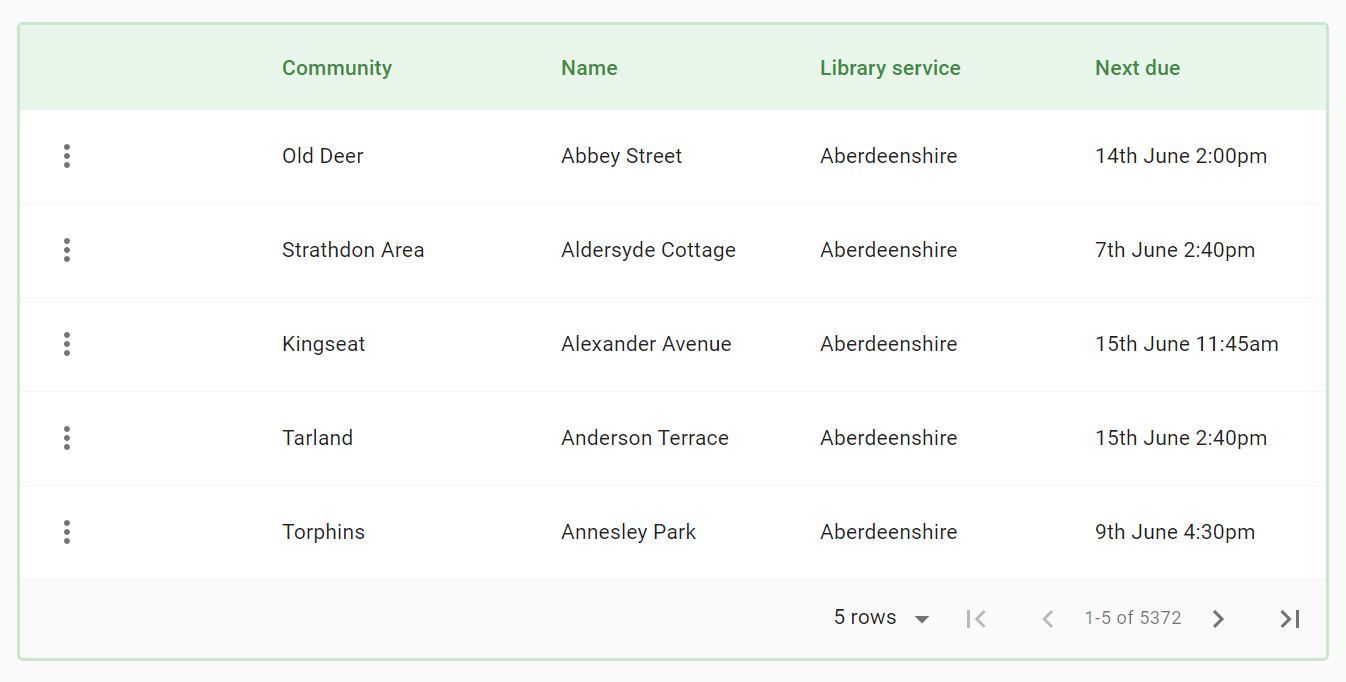Mobile libraries: content sharing
The mobile library project takes standardised data on mobile library stops, routes, and timetables, and aims to present that information in one place.
However, library services will want to present information on their own library websites. They do this currently, but the majority break accessibility requirements for public sector bodies. One of the goals of the project was to explore ways in which this information could be made as simple as possible, and presented with accessibility in mind.
Displaying information outside of library websites is fine, but clearly isn’t the answer. How do we present mobile library information in a standard, accessible way, and also get it onto library websites?
Provide embeddable widgets
The mobile library stop list displays a table of mobile library stops. This includes the name of the stop, the community, library service, and when it is next due.

A simpler version of this, with a search facility, will be made available for any website. It will also allow for a library service to only show their stops.
It would also be worth creating a widget to embed only information about a particular stop. Such as the location and the next few dates the mobile library is due. This could be embedded on any websites relevant to that location. A smaller village website for example.
When functionality such as enabling emergency cancellations to routes is added, these widgets would also then provide an additional means of showing users when the mobile library isn’t running. Maintain data in one place - display it everywhere.
Provide APIs for use by digital teams
Plenty of Council websites would much rather create their own way of displaying mobile library information - many of which will be very good.
That’s still supported in a scenario where the mobile library timetable data is held externally as open data. When writing the mobile library website I intentionally created a set of APIs (application programming interface) that provide the data. These can be used by other websites and services. They are all openly available.
The full technical documentation is available at Mobile Libraries API. It provides a means to obtain data on organisations (library services), mobile libraries, routes, and stops. That can then be displayed on any website as required.
Link to the PDF
Despite PDFs not being appropriate as the only way of providing information online, there are still some scenarios where they are useful.
For example, PDFs are primarily a print format, and some users may want a printout that lists the upcoming mobile library visit dates for their stop (maybe for the next year).
These can be a created from data. The mobile library API also provides a way of accessing a PDF for each stop. The PDF can be made available by a simple link. Services could list these on their websites.
It’s also possible to generate a PDF that lists all stops for a particular mobile, route, or library service. Although many services do something similar to this I’m not convinced it’s that useful for users. It’s hard to navigate and filter PDFs - in many cases it makes finding information about a single stop more difficult.
Feedback
Library services with mobile libraries - get in touch if you’d like a demo of any of these things! I already have a basic template for a stop PDF, but it would be great to co-create a good printable template for a mobile library stop. Also - if you currently only provide PDFs and not web content - what are the barriers? Would embeddable content be useful?
